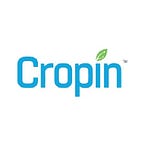Defining Land Use / Land Cover With CropIn’s Deep Learning Engine
Advancements in geospatial technology and the increasingly groundbreaking use of artificial intelligence and deep learning is enabling a scientific, data-driven approach to effective environmental monitoring. Remote sensing technologies are enabling the study of changes on Earth’s land cover, which includes vegetation, water surfaces, and man-made features, as well as various land-use patterns. Human activities in the past few centuries have accelerated and intensified the transformation of the Earth’s surface. In this light, the classification and evaluation of land use/land cover (LULC) patterns are critical to global monitoring studies, environmental conservation, land use planning, resource management, and sustainable development around the world.
The land is the primary and most essential input for agriculture, and it is needless to say producing enough food, feed, and fibre for the world population would be impossible if there is not enough land for agricultural purposes. For this reason, the analysis of the distribution of arable land becomes imperative to determine the availability of land for farming purposes in different regions, and consequently boost agricultural production the world over. Comparing remote sensing satellite data captured at different points of time also enables monitoring LULC changes to identify the shrinkage of agricultural land due to weather events or human activities.
How Does CropIn Define Land Use / Land Cover With AI and Deep Learning?
CropIn’s AI-powered engine classifies land usage based on the land use classification system developed by the United State Geological Survey (USGS). This system classifies land usage and land cover into multiple levels, the categories in each forming a nested hierarchy of sub-categories. For instance, Agriculture, which is one of the broad categories in Level I, includes detailed categories such as ‘ Cropland and Pasture’, ‘ Orchards, Groves, Vineyards, and Nurseries’, and ‘ Confined Feeding Operations ‘. While Level I categories are of LANDSAT type data, Level II categories are high altitude data (12400m or above) with better spatial, spectral, and temporal resolutions.
The LULC mapping by CropIn is based on Level I of the USGS system that is relevant for regional and various large-scale applications. CropIn’s engine adopts five of the nine sub-categories in Level I, viz agricultural land, barren land, built-up or urban land, forest, and water bodies. As the first step of LULC classification, data from raw satellite images is extracted and trained using CropIn’s proprietary algorithms to geotag state- and district-level boundaries in India. The data is then cleaned to remove irregular plot boundaries and improve the accuracy of data points and then trained again to map land usage for the current season (Rabi/Kharif). To map each of the five categories with distinct and precise boundaries, the trained models further undergo a two-step outlier removal. The repeated sanitising of data points results in pure pixels where ‘Built-up/Urban’ does not include any water body, or there is no presence of ‘Barren Land’ within ‘Agriculture Land’. These models are then tested for precision and retrained using various methods until an accuracy of not less than 90% is achieved.
The land usage map generated by CropIn’s system for Rabi season is based on an optical model. However, for the Kharif season, models are being built based on Synthetic Aperture Radar (SAR) image data considering increased cloud cover during the period.
Once LULC has been classified and audited for accuracy, land-use mapping for Agriculture will be extracted by SmartRisk® and displayed on its interactive map-based dashboard, based on which crops in the given region will be identified as per user requirement.
How Does This Translate Into Value For Financial Institutions, Agri-Input Companies, And Government Entities?
LULC information that is both up-to-date and reliable has its many advantages in the agri domain, particularly when used by governmental bodies and agri-lending institutions, to develop effective agrarian policies. SmartRisk® facilitates key stakeholders in governmental bodies to determine the availability of agricultural land in a given region (at farm/postcode/state/country level) for that particular season. The intelligent platform also establishes the historical performance of the region, which allows users to compare current data with past records to examine LULC changes as a result of urbanisation, encroachment, or severe weather events in the region. Other activities such as planning water supply for irrigation needs also become effective with the use of this cutting-edge platform’s LULC capabilities.
Banking, insurance, and other financial institutions can analyse the net sown area at a regional level to decide on their lending policies and expansion of business to new regions. At a plot-level, the institution can identify whether a farm plot is being cultivated and leverage records of the historical performance of the plot for quicker loan underwriting and risk assessment backed by alternate agri-data. Learn all about how AI is optimising insurance payout for one of the world’s largest crop insurance programs.
Seed manufacturers and other agri-input companies can optimise their sales strategies based on the net sown area and crop classification data made available on SmartRisk’s dashboard. The knowledge of what crop grows where, and what its crop stage and health looks like, empowers input companies to make their products available at the nearest distribution points. On the other hand, sourcing and procurement enterprises, as well as commodity traders, can leverage this agri-intelligence to identify crops spread across a region and make smarter purchasing decisions based on the availability of the crop.
How can SmartRisk® impact your top and bottom lines? Discover more here.
Originally published at www.cropin.com.
